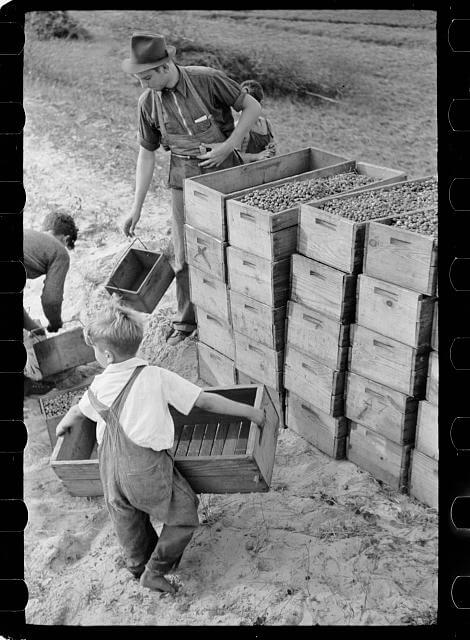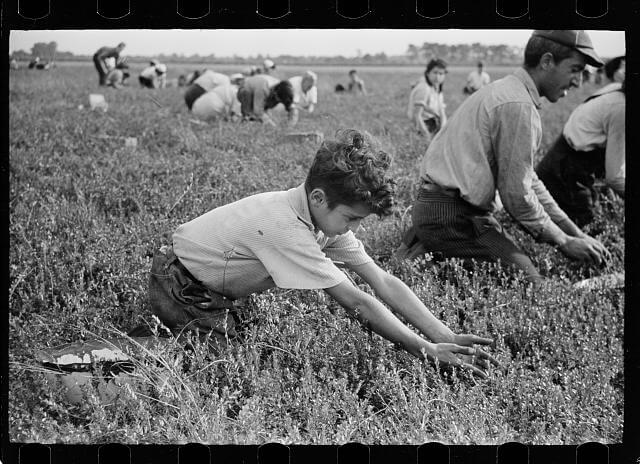Though the United States government first enacted limitations on child labor over a century ago, the landscape of child labor laws continues to evolve and change in modern day. States around the US continue making efforts to strengthen, weaken or generally modify the laws impacting the role of America’s youth in the workforce. Throughout these efforts, it’s important to be mindful of the role of child labor in our past, and the role that regulating it continues to have on our country’s future.
A Brief History of Child Labor
As far as historians can ascertain, child labor has existed for as long as human civilizations have engaged in labor-intensive activities. In many cases, couples chose to have many children as an investment in their future. Parents often saw them as individuals to boost productivity and reduce the burden on the parents to solely provide for the family. This continued on for many centuries as the societal norm.
Heading into the Industrial Revolution at the turn of the 20th century, industrializing countries, like the US and the UK, relied heavily upon child labor. Workers as young as five and six years old found themselves employed in factories, textile mills, coal mines and more. Writer Sarah Cleghorn wrote a short poem about the juxtaposition of working children and leisuring adults in 1914:

“The golf links lie so near the mill / That almost every day / The laboring children can look out / And see the men at play.”
The conditions young workers faced were often hazardous. In factories, they were often exposed to moving machinery that could easily cause physical harm, or stuck in enclosed spaces breathing in harmful materials, as well as other dangers. And while starting work so young had the opportunity to provide them with a wealth of work experience, long working hours prevented them from pursuing meaningful educational opportunities.
The Evolution of US Child Labor Laws
While many may associate child labor laws with FLSA, the first one passed in the US actually occurred nearly 100 years earlier. In 1842, Massachusetts passed a law limiting the workday for children under age 12 to 10 hours. But this law, like many others of the same era, was surprisingly limited in scope. Additionally, laws are only as strong as their enforcement, and many companies continued operating as before without heeding the new legislation.

As the 19th century shifted into the 20th, advocacy and activism around child labor protections grew rapidly. If you remember learning about the term “muckrakers” in your high school history class, this is where they really came into play. Photographs and anecdotes showing young children working in alarmingly dangerous conditions brought a surge of support for greater regulations around children working.
Ultimately, these efforts culminated in the passing of the Fair Labor Standards Act (FLSA) in 1938. When passed, the FLSA established a federal minimum wage, capped employee working hours, and clarified rules around overtime pay for all workers. It also essentially outlawed child labor.
The passage of FLSA also established the Department of Labor’s Wage and Hour Division to ensure enforcement of the new legislation, which it continues to do today.
Limits for Young Workers
FLSA is probably the most well-known labor law in the US, but some may wonder exactly how it impacts the ways young people can work. Here’s a brief overview of the Department of Labor’s rules regarding what age Americans are allowed to work, and in what capacities:
- Children under 14 can’t work in non-agricultural jobs covered by FLSA, though FLSA-exempt positions (babysitting, newspaper delivery, acting, paid chores, etc.) are acceptable.
- Children who are 14 or 15 can work outside of school hours in non-manufacturing, non-hazardous jobs. There are limitations to the amount of hours they can work, as well as the time of days where work is permissible.
- 16 and 17 is considered the general minimum age for most employment under FLSA. There aren’t restrictions on how many hours or when they can work, so long as the positions aren’t “declared hazardous for minors” by the Secretary of Labor.
- No person under 18 can work in a job determined to be hazardous by the Secretary of Labor.
- In general, children under 15 can’t work in non-agricultural jobs that are covered by FLSA.
- Children, regardless of age, may generally work for businesses their parents entirely own, unless determined to be hazardous by the Secretary of Labor. However, children under 16 aren’t allowed to work in mining or manufacturing, even if their parents own the business.
The Impact Today & Tomorrow
As one might expect, enforcing laws to reduce child labor and improve early access to education have had a profound impact over the last century. As of 2021, the US Census Bureau reported 91.2% of Americans aged 25+ have earned—at a minimum—a high school diploma. High school completion rates clocked in at 91.1%. Technology has made information about workers rights and the history of the labor movement more accessible than ever, and overall the American public is more educated than ever before.
Child labor laws have created a culture where young American minds can grow and thrive, but many states are having conversations about relaxing certain child labor restrictions. Simultaneously, others continue to fortify their state child labor laws. In whatever ways this area continues to evolve, it’s important that the US continues striking a balance between offering work opportunities and freedom without infringing upon childhood development and important educational opportunities.



